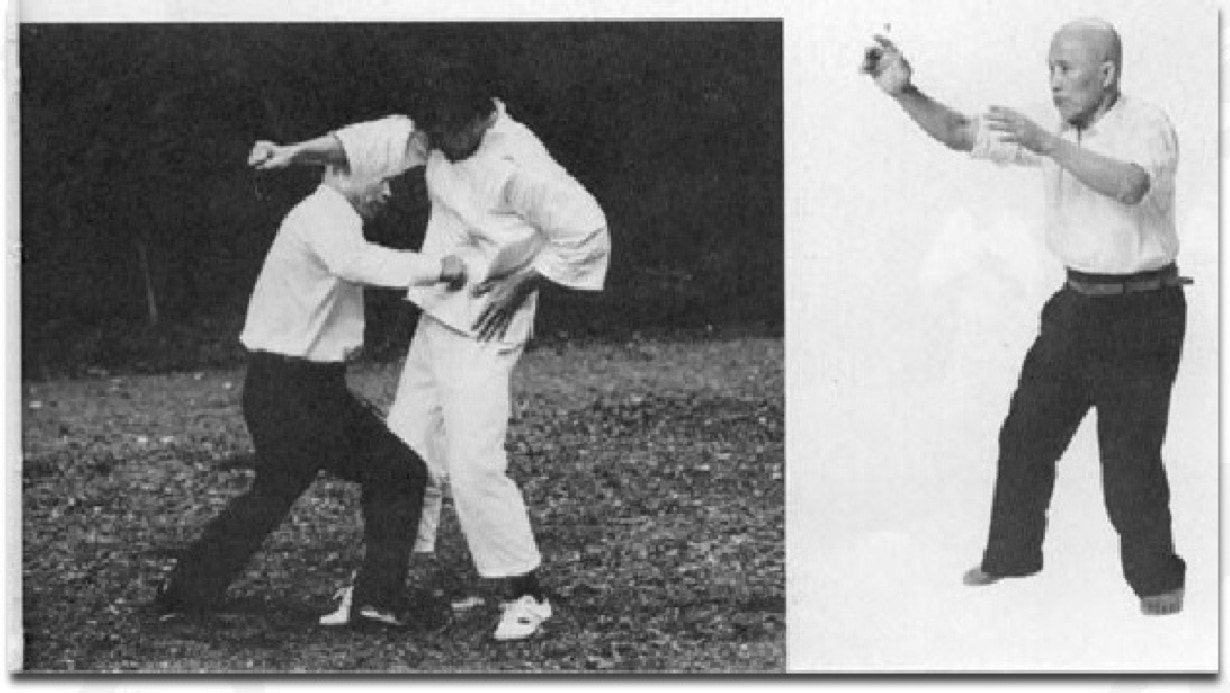
Internal Martial Arts
the
TAIKIKEN
pages
Those who can reach the point where they take no pleasure in anything
find that can now enjoy everything.
Since there is nothing they do not enjoy,
their happiness is supreme.
2025

Taikiken's Unique Approach to Martial Arts: Emphasizing Flexibility and Lack of Fixed Forms.
This is connected with the lack of fixed forms in Taikiken. For instance, there are no such things as right positions or left positions in Taikiken. The arms are antenna constantly sensitive to what can be done for the sake of protection. The hips are like the earth in that they provide stability. It is, true that sometimes we employ training in lowering and raising the hips, but this is only for the sake of developing flexibility. There are no definite hip techniques, because a person whose body is trained and flexible can use his hips as he needs to. Generally, the steps taken in Taikiken are small; it has been said that among the great men of Taikiken there are none with wide strides.
Defense and attack constitute all of the hand work in Taikiken. The two techniques for the hands are called mukae-te. and harrai-te. In the former, one uses the inside of the arm to block the opponent's arm and to pull it inward. In the latter, one uses the outside of the arm to parry the opponent's techniques. It is further important to know how to move from mukae-te to harai-te.
For the sake of discussion, I assume that the word arm means everything from the shoulder to the fingertips. When a person stands as shown in Fig. A, Taikiken practice assumes that the arm will move like the antenna of an insect. Whether to defend oneself by blocking with the inner side or with the outer side of this antenna will be determined naturally when the opponent attacks. The arm must act independently on its own; the defence involving it is not a matter of the eye or the head. It is important to remember that, when the right hand rises or lowers, as in Fig. A, the left hand must move with it as reinforcement (what is called soe-te). For example, if the right hand is unsuccessful in blocking the opponent's attack, the left hand must be ready to block on its own.
Of course the entire body must respond to the motions of the arm-antenna If the arm lowers, the hips must be lowered at the same time. If the arm advance, the hips must advance too. Allowing the motion of the body to follow the motion of the arm, greatly increases the power of the arm.
All people who practice Taikiken must constantly keep this characteristic use of the arm in mind as they train.
It is good to conduct Taikiken training out of doors. A training hall is unnecessary. It is wrong to feel that facilities of this kind are prerequisites of practice. Out-of-doors training, especially in the woods in the morning is best because a setting of this kind enables one to learn many things from nature. Since martial arts are matters of gradual, personal growth, daily training in a natural setting is the one and only way to true progress.
I sometimes compare a life of training in the martial arts to a tree. When a person is young, strength fills his body and enables him to withstand any amount of training. This is like the thick, strong trunk of the tree, But as one grows older, one becomes less durable, just as the branches of a tree grow smaller toward the top and finally become slender twigs that shake in the wind and that can be easily broken.





